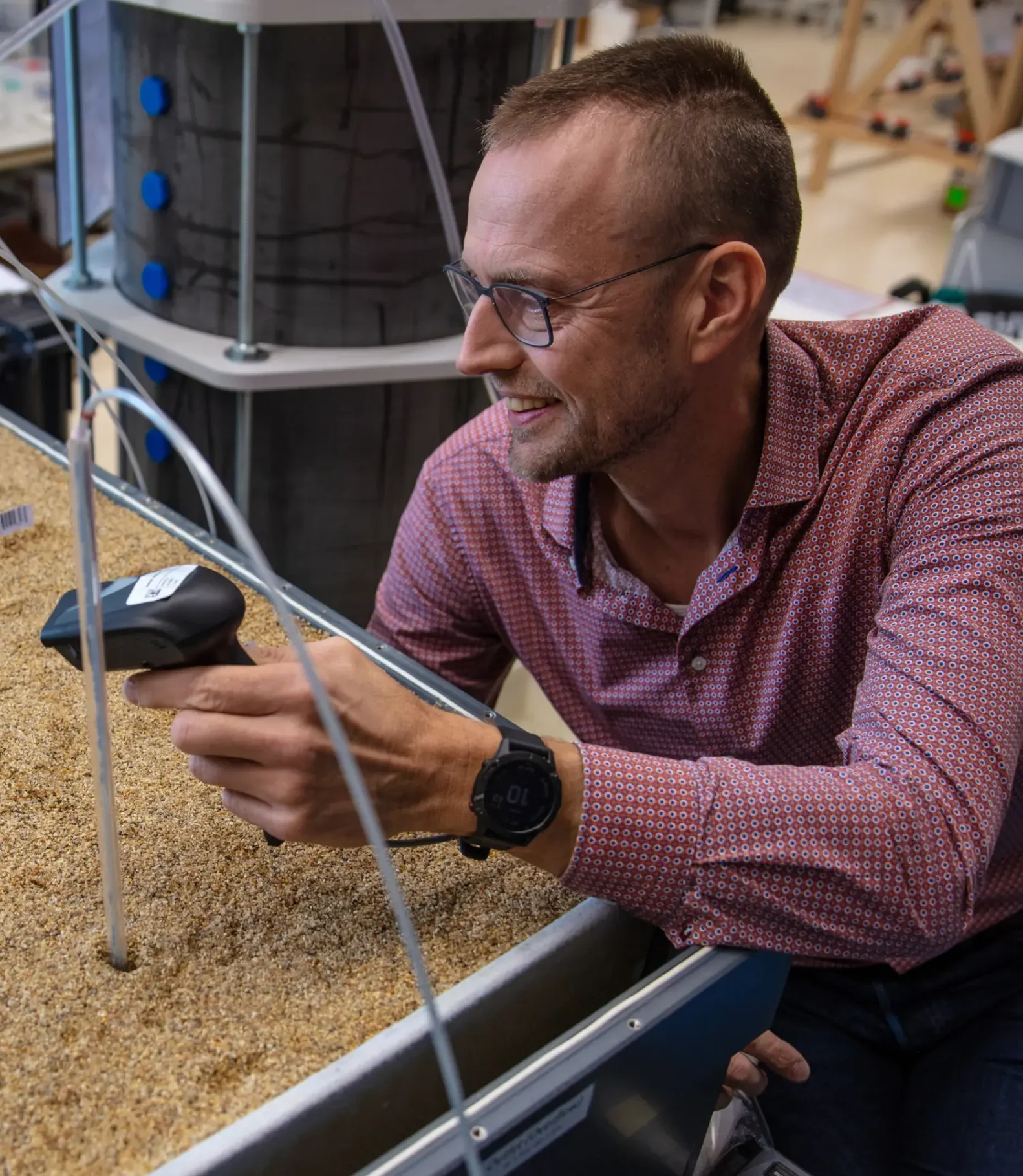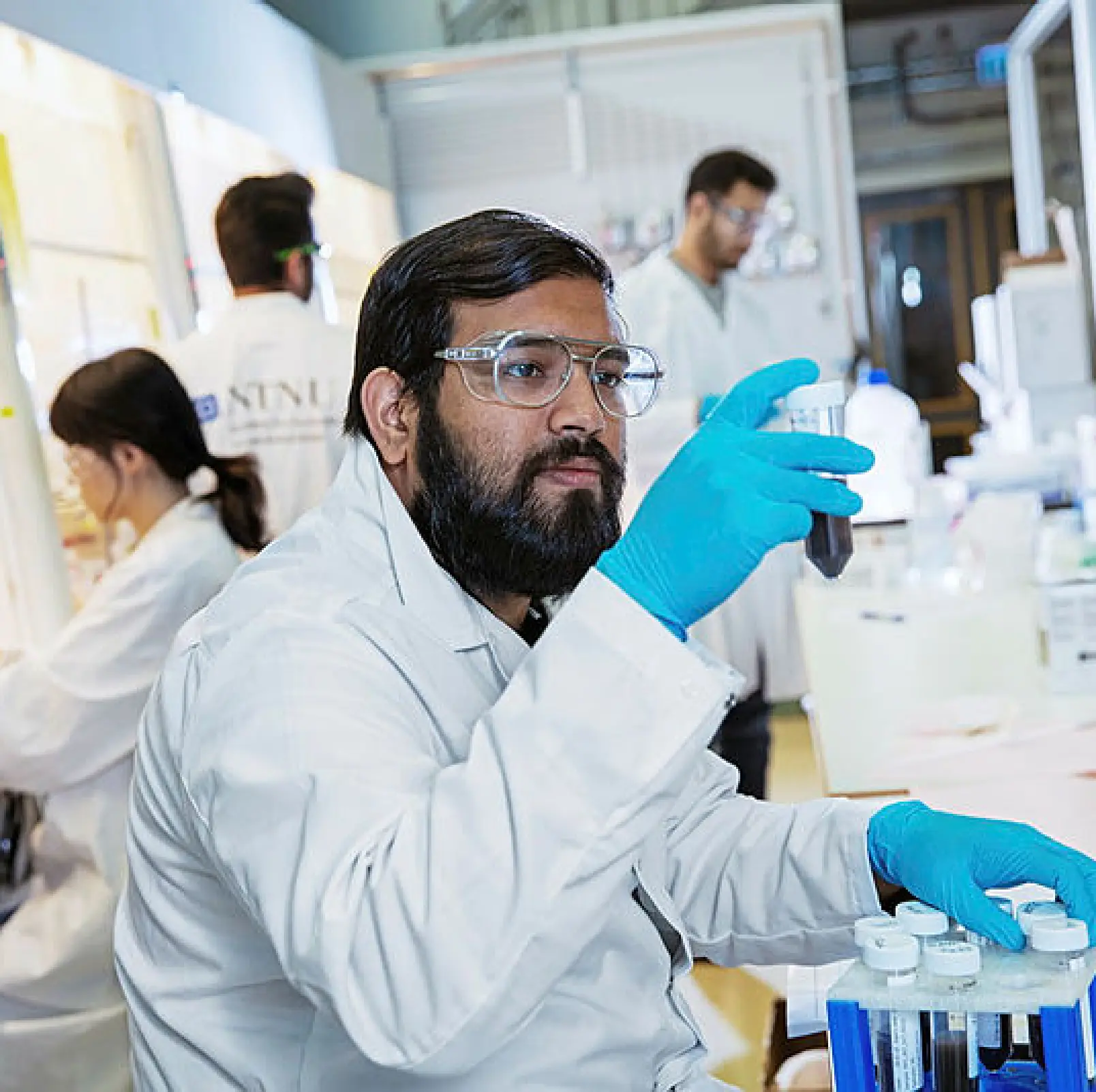Serendipity

‘By chance, we were working on a particle just when demand for it skyrocketed’
In order to detect pollution in drinking water, TU Delft hydrologist Thom Bogaard developed extremely tiny particles just a few hundred nanometres in size in order to replicate the transportation of bacteria or viruses in water. Bogaard: “Basically, we wanted to use magnetic sand particles – to which we added synthetic DNA as a unique bar code – as a tracer instead of kitchen salt. But it proved more complex than we hoped.” We needed a post-doc who knew how to develop and improve these magnetic sand particles. The best candidate was Sulalit Bandyopadhyay, awarded his PhD at the Norwegian University of Science and Technology (NTNU) in Trondheim. Starting in 2017, he worked with the Delft researchers from the lab at NTNU.
The coronavirus pandemic really accelerated the magnetic sand particles. In the first week of lockdown in Norway, the NTNU University Hospital had already exhausted its stocks of COVID-19 tests. To avoid having to rely on commercial parties, the hospital wanted to develop its own method of testing with the NTNU. As luck would have it, PCR tests actually use magnetic particles that separate the virus RNA from the sample. Bogaard: “We knew that silicon dioxide (‘sand’) attracts RNA and DNA, but had no idea that the magnetic sand particles we were working on were used in diagnostics.”
That changed when the hospital made an appeal to the knowledge institutions on the NTNU campus to send in magnetic particles. The next day, Bandyopadhyay sent off five different samples of magnetic sand particles, all of which successfully isolated COVID-19 RNA. Bogaard: “It turned out that Bandyopadhyay’s particles worked as well as those commercially available. They even make the tests more sensitive, because they’re smaller.”
Tekst Marjolein van der Veldt

Thom Bogaard @Frank Auperlé

Sulalit Bandyopadhyay @Geir Mogen
The NTNU coronavirus test works in a similar way to a commercial PCR test. The swab from the nose and throat is mixed with a buffer solution, a lysis buffer, that breaks open the virus particle to release the RNA. Colleagues of Bandyopadhyay developed an improved formula for this buffer. Then, it is a question of adding magnetic sand particles that bind to the RNA. A magnet separates the RNA particles from the fluid. A standard PCR analysis then determines whether the virus RNA is present.
Now, it was a question of upscaling the particles as rapidly as possible. Bandyopadhyay: “The breakthrough came when we managed to upscale from a thousand tests to 150,000 within a week.” Production later even peaked at 300,000 tests a week. Two weeks later, Bandyopadhyay’s lab received a letter from the Norwegian healthcare institute asking for a delivery of 5.5 million tests. There were two production lines, so that if anyone tested positive for the virus, the second could continue to work. There was also a lot of media interest. Bandyopadhyay: “It was hectic, but also rewarding, we were able to give something back to society.”
More than ten million test kits were sold, in Norway, Denmark, India and several South American countries, and a spin-off company was set up. Bandyopadhyay is an associate professor at the NTNU and is in charge of a lab that develops nanomaterials.
Cooperation crucial
Looking back, Bogaard realises that the cooperation with the Norwegian University played a crucial role. “By chance, we were working on a particle just when demand for it skyrocketed. If we hadn’t worked with the Norwegian university, the new test kits would never have happened”, says Bogaard. Bogaard also told the National Institute for Public Health and the Environment (RIVM) that he was able to supply test kits. However, after six weeks, they confirmed that they only used medically-approved commercial tests. Bogaard: “The Norwegian government had the courage to take major steps in approving the use of new particles in diagnostics.”
The fact that the discovery caused some delay to his water research was not an issue for Bogaard. Besides, the research actually benefited from the knowledge to improve and upscale production of magnetic sand particles. Bogaard: “It is not often that scientific research proves so hugely successful and can be immediately applied. Any scientist to whom this happens just once in their career will be incredibly happy and proud.”
